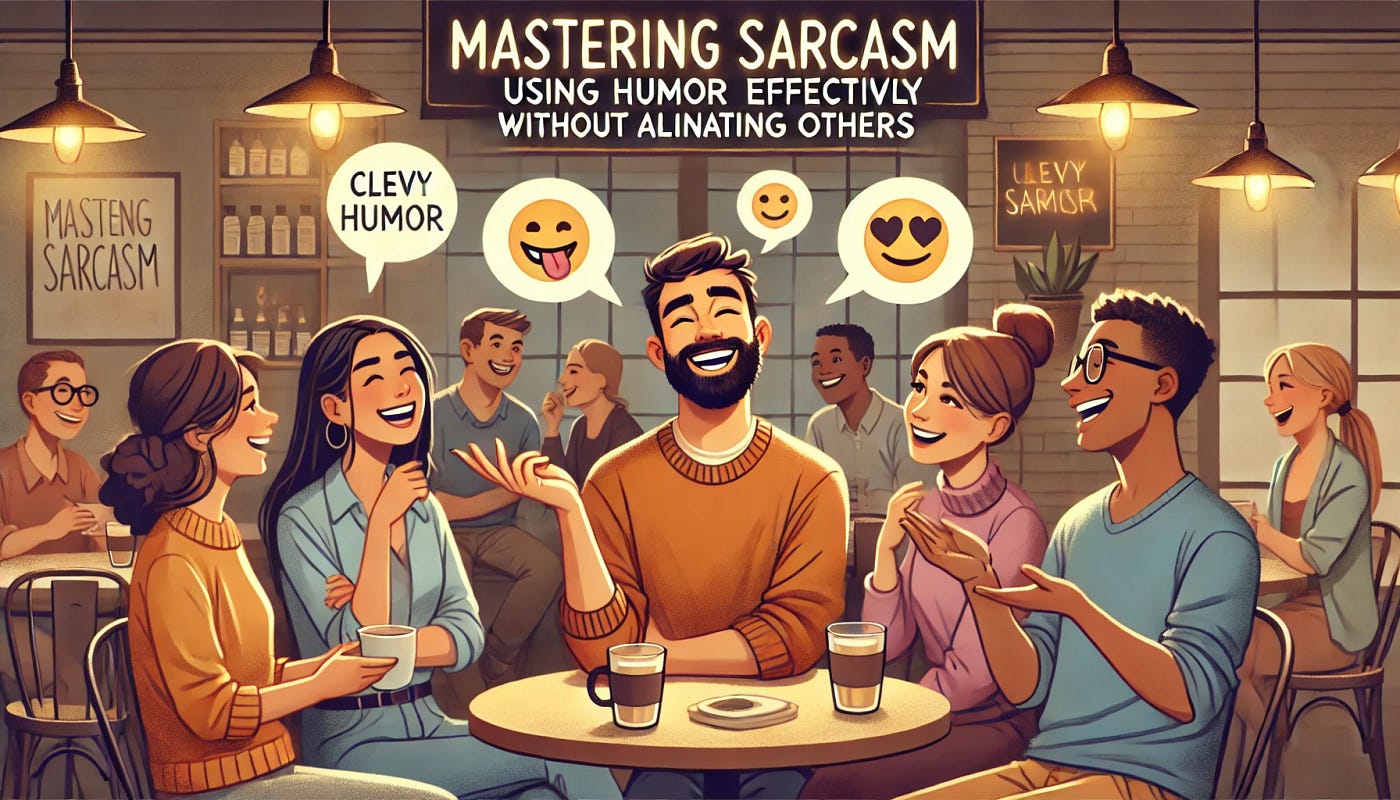Humor is a universal aspect of human interaction; however, the manner in which individuals employ it can vary significantly based on context, personality, and culture. **Subtlety** and **sarcasm** are two prevalent forms of humor that provide distinct approaches to eliciting laughter and fostering connections. Comprehending these styles can enhance communication and enhance our understanding of the diversity of humor.
Bold and Sharp Sarcasm
Sarcasm is the act of expressing the antithesis of one’s intention, frequently in an exaggerated or pointed manner. It is typically evident, direct, and can be either playful or venomous.
The following are the primary characteristics of sardonic humor:
* **Unambiguous contrast:** The meaning is contingent upon the context and tone, which indicates that the speaker does not intend the literal content of the words.
* **Witty and rapid:** Frequently relying on timing, this individual is quick and clever. * **Can be critical or teasing:** Sarcasm has the potential to either elevate the atmosphere or emphasize one’s shortcomings.
* **Frequently encountered in Western societies:** Sarcasm is an essential component of informal discourse and comedy, particularly in the United States, the United Kingdom, and Australia.
Although sarcasm can be engaging, it can also be misinterpreted or harmful if the listener fails to catch the jest or feels targeted.
Nuanced and Gentle Subtlety
Humor that is subtle is more subdued. It often necessitates the listener to “read between the lines” and rely on irony, understatement, or cunning wordplay.
Key characteristics of subtle humor:
* **Inadequate delivery:** The jest is not overt; in fact, it is occasionally nearly concealed.
* **Clever and sophisticated:** Individuals who appreciate subtleties and multilayered significance frequently find it appealing.
* **Less confrontational:** Typically, the individual avoids causing offense by being enigmatic or delicate.
* **Highly esteemed in numerous cultures:** Particularly in Asian countries and among individuals who are more reticent on a global scale.
Subtle humor fosters a sense of mutual comprehension and frequently establishes rapport by eliciting empathy and insight.
When Should Each Style Be Employed?
In environments where unvarnished honesty is tolerated, sarcasm is effective when employed among close companions. It has the ability to rapidly emphasize anomalies and energize conversations. Nevertheless, it may cause others to feel alienated if it is misused or misdirected.
Humor that is subtle is more appropriate for situations that are delicate or for individuals who value a more deliberate, less aggressive approach. It has the potential to cultivate connection without causing conflict; however, individuals who are not familiar with the context may overlook it.
Accepting Both
Sarcasm and subtlety are often inadvertently combined by individuals, who adjust their approach according to the situation and their emotions. It is beneficial to be cognizant of these distinctions in order to prevent misunderstandings and appreciate humor in all its manifestations.
In conclusion,
In distinctive ways, both subtlety and sarcasm enhance our social connections and conversations. Humor is a reflection of the intricacy of human interaction and cultural expression, regardless of whether it is conveyed with a sharp edge or a delicate touch. By acknowledging these styles, we strengthen our relationships with others and are reminded that amusement is truly a universal language.

Leave a Reply